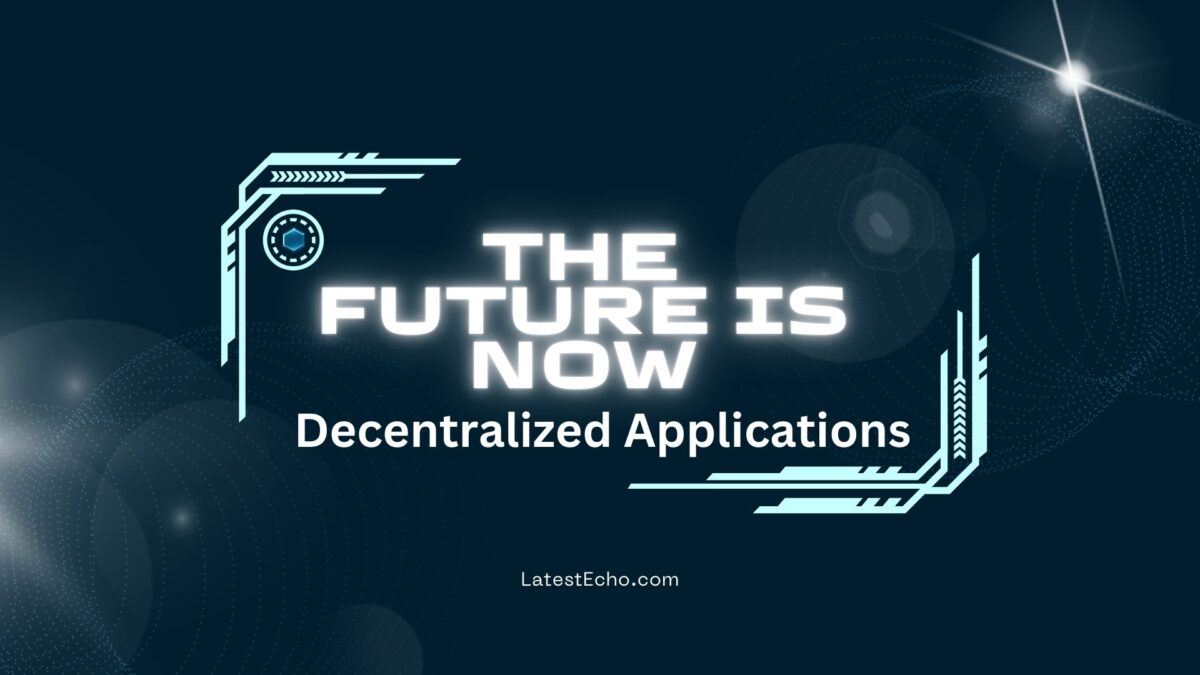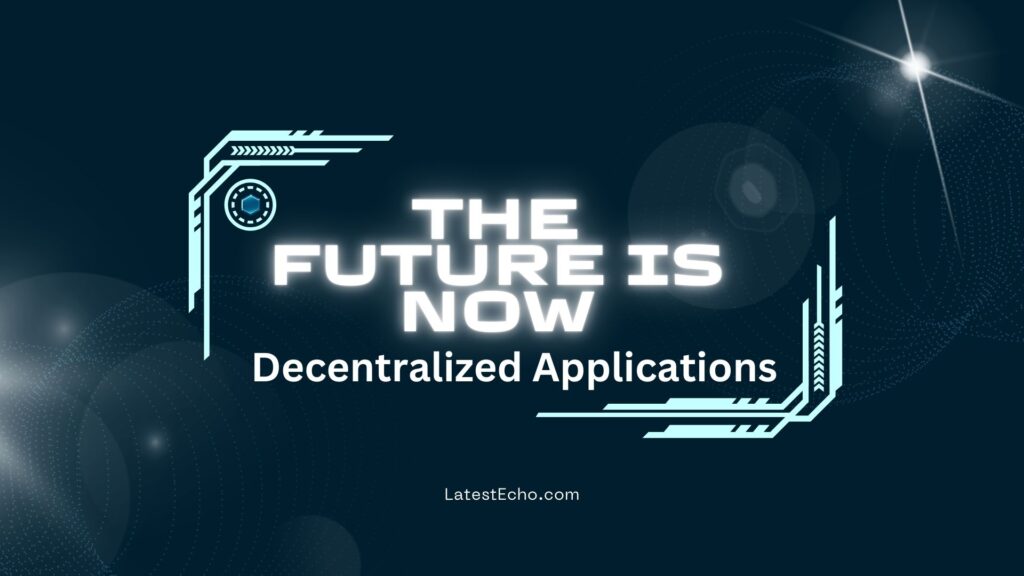
Decentralized Applications (dApps): The Next Big Thing in 2025
In 2023, people spent more than $22 billion on decentralized applications. Did you know that? The dApp industry is growing rapidly! Consider dApps as mobile applications that are uncontrolled by anyone, not even major IT firms.
Highlights:
- Using smart contracts to operate on blockchain networks, dApps do deal with central authority control while guaranteeing multi-node verification of transactions.
- DApps are transforming established sectors by driving significant advancements in digital art (NFT marketplaces), gaming (play-to-earn), and banking (DeFi).
- The most prevalent platforms for developing are Cardano (which uses a research-based methodology), Solana (which facilitates high-speed transactions), and Ethereum (which is the most extensively utilized).
- Comprehensive transaction transparency, improved security via decentralization, and total user ownership over digital assets and personal data are some of the main advantages.
Understanding Decentralized Applications
What Are Decentralized Applications?
Consider standard apps such as Twitter or Instagram. Imagine them operating without an administrative center. Decentralized applications are unique because of this! Instead of using ordinary servers, these modern applications run on blockchain networks. These amazing apps are fueled by automated agreements. They function similarly to computerized vending machines that never break from their programming. There’s no need for human involvement! Ethereum has always been a number one choice when it comes to developing dApps among developers. Other blockchain platforms, such as Cardano and Solana, provide fascinating substitutes, though.
Benefits of Using Decentralized Applications
Decentralized applications are wonderful because they are transparent. Every financial transaction is permanently visible on the blockchain. Users continue to stay in total control of their private information. Conventional apps may unexpectedly stop working. However, decentralized apps continue to function as long as the blockchain is in place. This opens up incredible opportunities for the financial services industry! In decentralized applications, there isn’t a single point of breakdown. Thousands of computers throughout the world keep the network running. They are hence extremely resilient to attacks.
Popular Types of Decentralized Applications
DeFi (Decentralized Finance)
Traditional banking services have been revolutionized by DeFi applications. Every month, billions of transactions are processed by well-known systems like Uniswap. Many DeFi devotees are drawn by yield farming. Smart contracts transfer money between protocols seamlessly. For investors, this optimizes possible returns.
NFT Marketplaces
NFT marketplaces are a favorite among artists working in digital media. These sites enable producers to sell one-of-a-kind digital products to consumers directly. With millions of NFTs traded, OpenSea is at the top of the pack. Through NFT sales, some artists have made money that has changed their lives. The technique demonstrates that digital limitation is effective. This creates new opportunities for digital property ownership.
Decentralized Gaming
Players of blockchain games receive actual rewards. Playing these innovative games allows some gamers to earn a consistent income. Play-to-earn games were demonstrated to the world by Axie Infinity. Many families benefited from playing the game during difficult financial times. New dApps for gaming keep pushing the envelope.
Challenges and Future Outlook
On rare occasions, blockchain networks experience trouble handling heavy load. Around busy times, gas costs might make transactions costly. Scaling solutions are an active area of development. For decentralized apps, security is still quite important. Bugs in smart contracts could result in lost money. Nonetheless, auditing procedures continue to advance yearly. Decentralized applications appear to have a promising future. Blockchain technology is being investigated by major corporations. This promotes growth and development.
How Does DApps Work?
Decentralized apps can be compared to a digital piece without a conductor. These apps use smart contracts to operate on blockchain networks. Code makes every activity execute instantly. Smart Contracts is the foundation of decentralized applications. The smart contracts activate when users engage with dApps. All data related to transactions is permanently stored on the blockchain network. Every transaction is concurrently verified by several computers (nodes), which produces a chain of an unbreakable trust.
Also you may read: Cryptocurrency: A Bold New Era in Finance
Generative AI
AI in Healthcare: Revealing the Hidden Power
Advantages of DApps
One of the main advantages of decentralized applications is it’s transparency. The public blockchain keeps track of each transaction. Users are able to independently confirm everything. There is no single point of failure when there is no centralized power. Even if certain network nodes fall down, DApps continue to function. They are extremely durable as a result. Users are still in total control of their assets and data. User data is frequently sold by traditional apps. By using cryptographic security, DApps prioritize privacy.
Disadvantages of DApps
Performance of dApps can be slowed down by network traffic. Transaction fees may rise sharply when numerous users engage at once. It is difficult for the general public to embrace this technology. Decentralized apps take longer to fix bugs. Blockchain’s immutability adds complexity to updates. Developers need to make meticulous plans. Compared to typical apps, interfaces for users can feel less professional at times. Furthermore, the technology focuses more on functionality than aesthetics which may create a gap and shrink.
Characteristics of DApps
Applications that are really decentralized are defined by open-source code. Anybody can examine the application’s functionality. Users’ trust is increased as a result. The majority of decentralized applications run on cryptographic tokens. Network users are incentivized by these tokens. Additionally, they make unique characteristics like ownership rights possible. User data is protected via decentralized storage systems. Distributed systems take the place of conventional servers. This stops any unauthorized entry or alteration.
How will the future of IoT influenced by the dApps?
Decentralized applications provide smart devices real autonomy. Without the need for central servers, IoT devices can communicate directly. As a result, networks become more effective. Device communication is safe thanks to blockchain technology. Every exchange is permanently documented. This stops IoT data from being tampered with. Decentralized applications enable device-to-device micropayments. Resource sharing is automated by smart contracts. Imagine parking being paid for automatically by self-driving automobiles!
Most Common Platforms for creating dApps
Ethereum
Ethereum leads the pack in dApp development. Its robust smart contract capabilities attract developers worldwide.
Solana
Speed defines Solana’s advantage in the dApp space. The network processes transactions incredibly fast, which makes it perfect for applications with high-frequency.
Cardano
Scientific research backs Cardano’s approach to decentralized applications development. The platform prioritizes security and sustainability. Many consider it the most academically rigorous blockchain.

How Do Centralized and Decentralized Apps Differ?
Apps that are centralized depend on individual businesses or servers. Consider Facebook or Instagram, where a single company has complete control. Customers entrust their data to these businesses. Participants in the network share control with decentralized apps. Decisions cannot be made unilaterally by a single entity. Users are the true owners of their assets and data. These app kinds have various update processes. Overnight changes can occur with centralized apps. Major changes to DApps require community consensus.
How to Build a DApp
Learn how to create smart contracts first. The majority of dApp features is powered by languages like Solidity. You can find enough free information in the internet. Picking the best blockchain platform requires considerable consideration. The benefits of each network vary. Think about things like community support, cost, and speed. In the development of dApps, testing becomes essential. Once deployed, smart contracts cannot be readily modified. Extensive testing avoids expensive errors.
What is the Cost of DApp Development?
Depending on complexities, development expenses can vary significantly. The development of basic dApps could cost $20,000. Complex platforms might cost more than $100,000. Audits of smart contracts incur additional costs. The typical cost of a professional audit is $5,000 to $50,000. Users are shielded from vulnerabilities by this investment. You must also consider about the ongoing maintenance, and also after that there occurs other expenses like network fees, and gas fees, therefore, it’s necessary to make a long-term sustainability budget.
Conclusion
We can be almost sure that in this world of internet, the decentralized application is going to be the next stage. They provide genuine digital ownership, security, and openness. As technology continues to advance, everyone can take advantage of new exciting possibilities.
Frequently Asked Questions (FAQ)
What is a dApp in Blockchain?
As an alternative to using centralized servers, a decentralized application, or dApp, runs on blockchain networks. Smart contracts are used in these applications to automate tasks. Imagine them as conventional programs that don’t require centralized management.
What are the Decentralized Apps List?
Popular dApps include:
- Uniswap for cryptocurrency trading
- OpenSea for NFT trading
- Aave for lending and borrowing
- Axie Infinity for gaming
- MetaMask for wallet management
How Do You Make a Decentralized Application?
Creating a dApp involves several steps:
- Learn blockchain basics and smart contract development
- Choose a blockchain platform
- Design the application architecture
- Develop and test smart contracts
- Create the user interface
- Deploy and maintain the application
What is the Application of Decentralisation?
Decentralization powers various applications:
- Financial services without banks
- Digital art marketplaces
- Gaming platforms
- Supply chain tracking
- Identity verification systems
Are Decentralized Apps Safe?
Decentralized apps provide strong security through blockchain technology. However, smart contract vulnerabilities can pose risks. Professional audits and careful development practices help ensure safety. The community constantly reviews dApp security. Bug bounty programs incentivize finding vulnerabilities. This creates a robust security ecosystem. Regular updates and improvements strengthen dApp safety. Users should still practice good security habits. Always research projects thoroughly before using them.

Unleash the Magic of Multimodal AI: See, Hear, Feel
[…] Read: Decentralized Applications (dApps): The Next Big Thing in 2025Generative AI:Demystifyin’ the Mind-Bending MagicAI in Healthcare: Revealing the Hidden […]